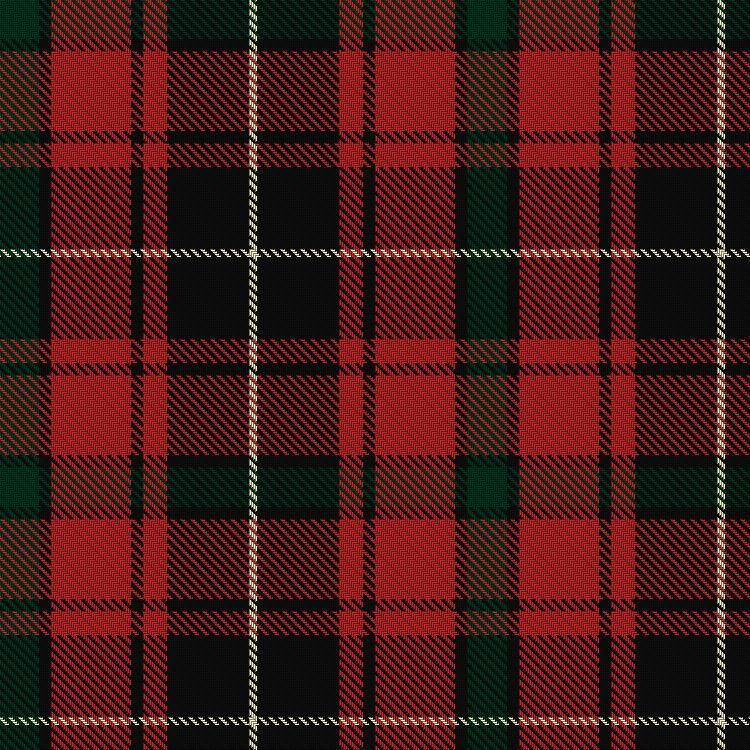Click the tartan to view its entry in The Scottish Registers of Tartans which includes registration details, restrictions, and registrant information.
Unregistered tartans may link to one of the web's online design environments for similar information.
For any questions about reproduction of designs or weaving of these tartans, please contact the registrant directly or via this website.
Remembrance Sunday
"In Flanders fields the poppies blow;
Between the crosses, row on row,
That mark our place; and in the sky
The larks, still bravely singing, fly
Scarce heard amid the guns below."
~In Flanders Fields, John McCrae, 1915
Remembrance Sunday—when the UK and many Commonwealth nations honor those who served and those who fell in war—is marked on this second Sunday in November, the one closest to 11 November (Armistice Day, marking the 1918 ceasefire).
Traditionally at 11:00 a.m., there is a two-minute silence, and wreaths are laid at memorials such as the Cenotaph in London.
This tartan's design uses the colours of red, green and black to represent the remembrance poppy and white to represents hope and the future of the living.
Poppies bloomed across some of the worst battlefields of Flanders in World War I, and their brilliant red colour became a symbol for the blood spilled in the war.
At the Battle of Second Ypres in April 1915, brigade-surgeon McCrae spent 17 days caring for the wounded and performing surgery on Canadian and Allied troops. Exhausted and saddened by the death of a close friend, he composed the poem In Flanders Fields during a brief rest.
The red poppy has become the symbol of remembrance, service, and sacrifice. We join with others this day in remembrance. ❤️ 🖤 🤍 💚 🎗️ 🎗️ 🎗️
Remembrance Sunday is held in the United Kingdom and the Commonwealth as a day "to commemorate the contribution of British and Commonwealth military and civilian servicemen in the two World Wars and later conflicts". It is held on the second Sunday in November, the Sunday nearest to the 11th of November, Armistice Day.
The red remembrance poppy has become a familiar emblem of Remembrance Day due to John McRae's moving poem "In Flanders Fields" written in 1915 and reproduced here in its entirety.
In Flanders fields the poppies blow
Between the crosses, row on row,
That mark our place; and in the sky
The larks, still bravely singing, fly
Scarce heard amid the guns below.
We are the Dead. Short days ago
We lived, felt dawn, saw sunset glow,
Loved and were loved, and now we lie,
In Flanders fields.
Take up our quarrel with the foe:
To you from failing hands we throw
The torch; be yours to hold it high.
If ye break faith with us who die
We shall not sleep, though poppies grow
In Flanders fields.
John MacRae was born in Guelph, Ontario and served as a gunner in the South African War. He was later a professor of medicine and physician at McGill University in Montreal. McCrae enlisted quickly at the outbreak of the First World War, hoping for a position as a gunner, but doctors were in short supply and he accepted an appointment as brigade-surgeon in an artillery brigade.
At the Battle of Second Ypres in April 1915, McCrae spent 17 days caring for the wounded and performing surgery on Canadian and Allied troops. Exhausted and saddened by the death of a close friend, he composed In Flanders Fields during a brief rest. The poem was published on 8 December 1915 in Punch magazine, where it achieved almost instant world-wide fame.
Notes from the register: This tartan has been approved and supported by The Royal British Legion, in celebration of the poppy, a symbol of remembrance and hope worn by millions of people as part of modern British life, culture and heritage. Colours: red, green and black represent the poppy and remembrance and white represents hope and the future of the living.
For some more history on how the poppies became an international symbol of remembrance, click the field of red poppies.









